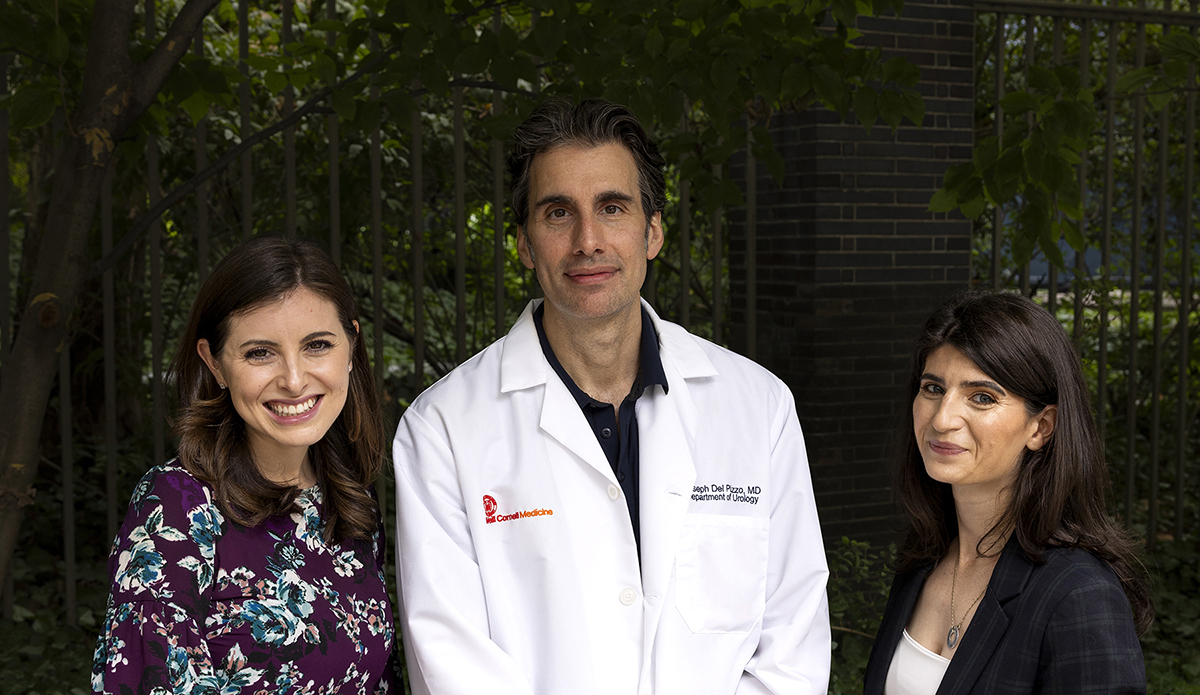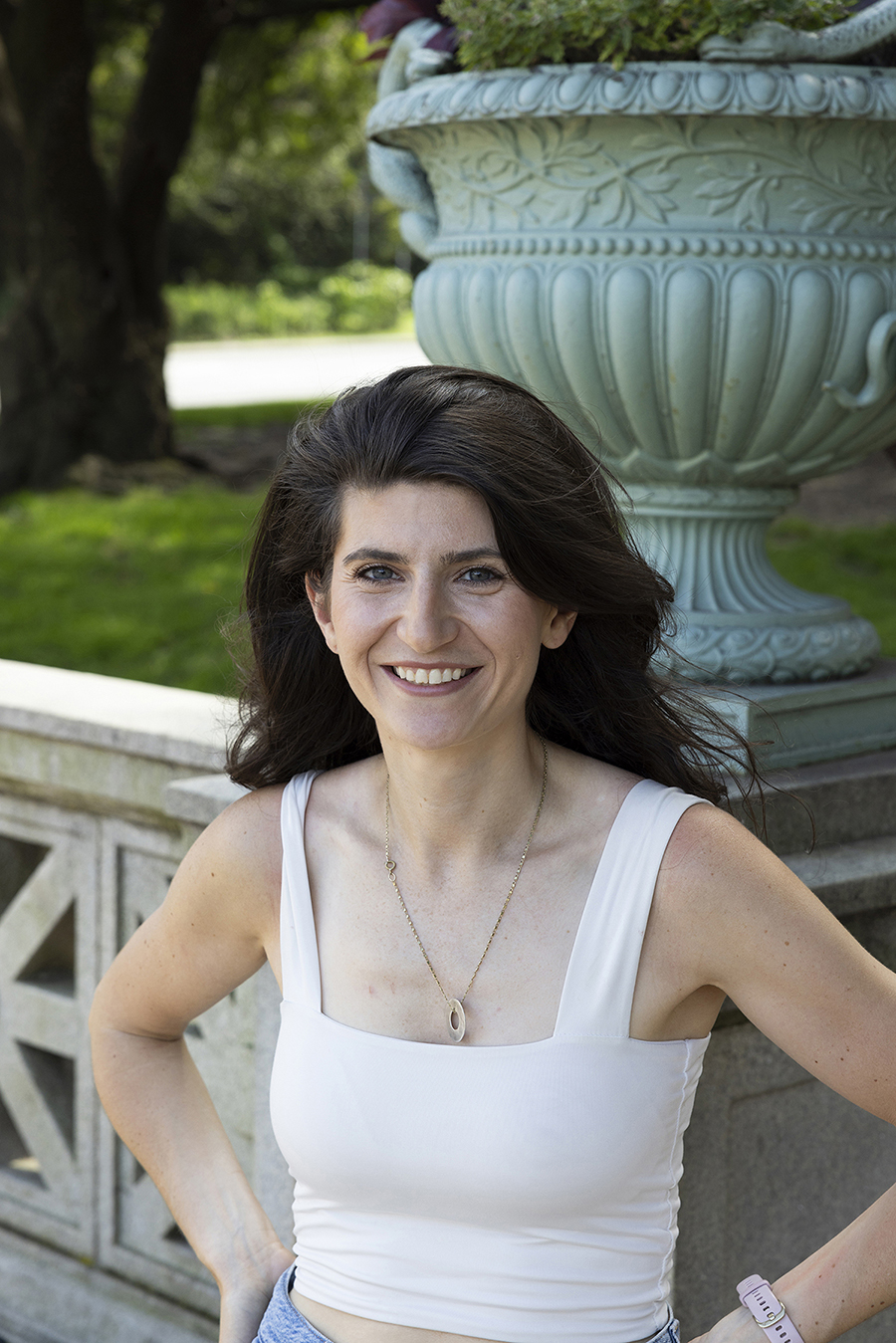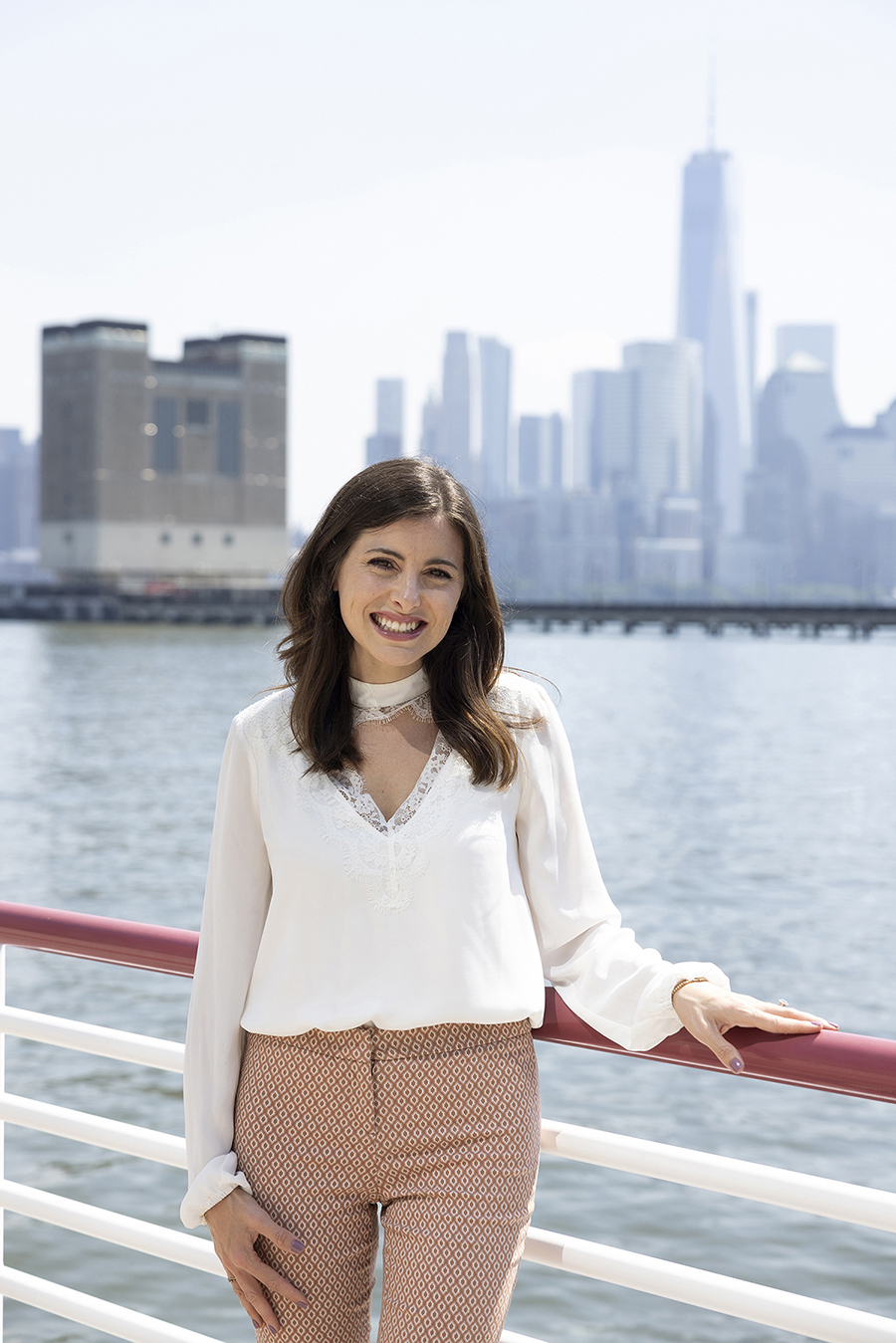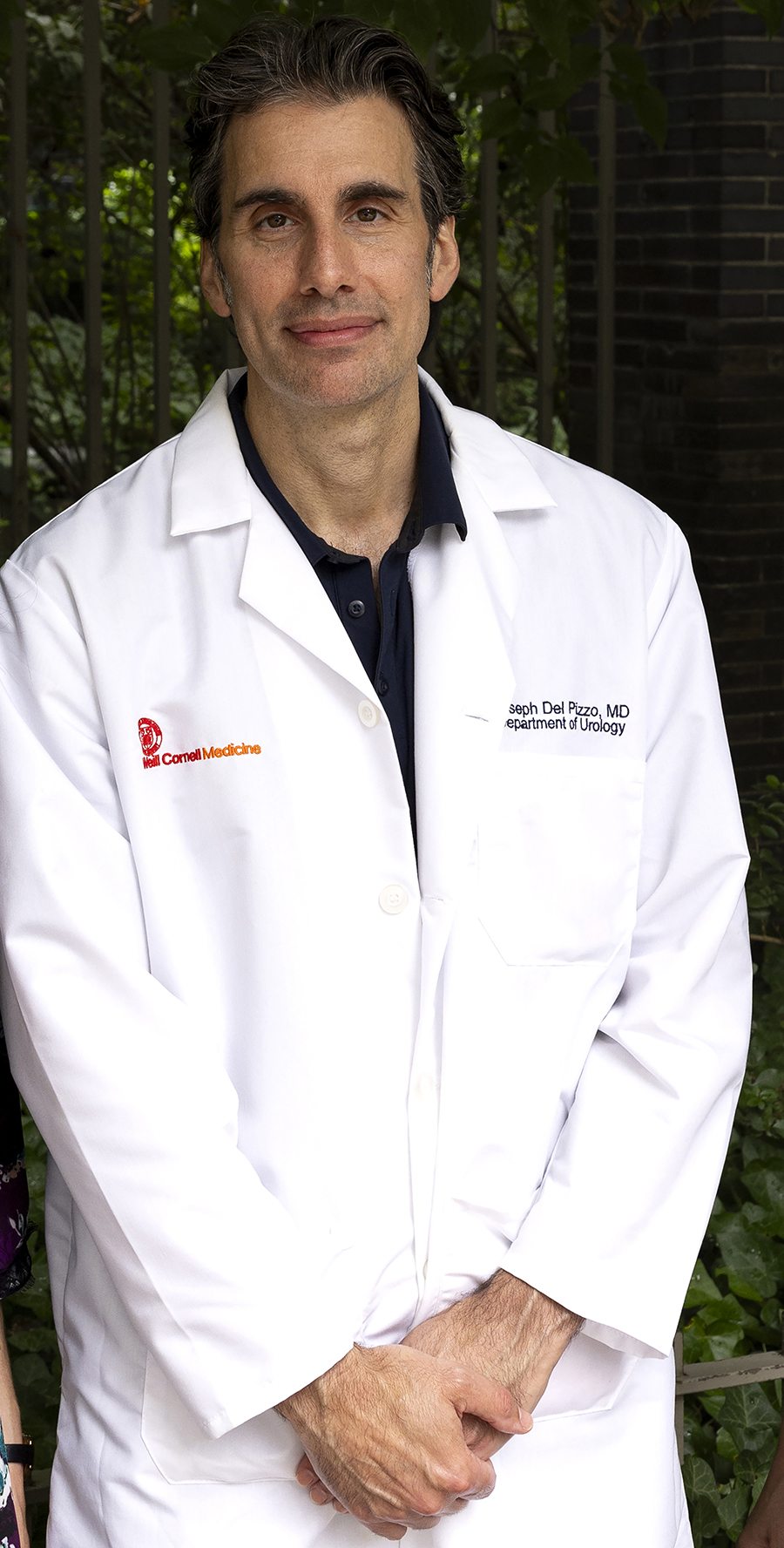Three Binghamton alums make a life-saving connection
Donor, coordinator and surgeon enable stranger to receive a kidney

For Arielle Disick ’12, donating a kidney in 2022 wasn’t about courage or charity. It was about simply doing something good.
“You never know how much of an impact that a little bit of kindness can make and what the ripple effects will be,” she says. “If you can do something to help, you should help.”
As a “non-directed donor,” Disick agreed to provide a kidney to an unknown recipient. The match with the stranger is based on medical compatibility.
More than 5,800 living-donor kidney transplants took place in 2022, according to the United Network for Organ Sharing. About 1,200 kidneys came from non-directed donors.
What makes Disick’s donation one of a kind is that she connected at New York-Presbyterian Hospital, Weill Cornell Transplant Center in New York City with two other Binghamton University alumni — transplant coordinator Jennifer Kirschenbaum ’13 and Dr. Joseph Del Pizzo ’90 — to save a life.
“I am so grateful to them and their role in making this possible,” says Disick, who did not know either medical professional before the transplant process. “I was comforted by the connection we have.”
“This [bond] shows what kind of people Binghamton attracts and breeds,” Kirschenbaum says. “The three of us came together in an organic way, but we’re from the same place.”
The donor
Arielle Disick grew up in New Jersey and chose Binghamton because she was looking for a strong business program not too far from home. Visiting a cousin who attended the University clinched the decision for her, and she entered as a School of Management student in fall 2009. A six-week study-abroad visit to Spain and a Birthright Israel trip through Hillel were among the highlights of her Binghamton experience.
“It was a defining moment in my time at Binghamton,” she says of traveling to Israel. “Even in the winter of my senior year, I was able to meet lifelong friends.”
After graduating in December 2012, Disick “bounced around geographically” — receiving her law degree from Emory University in 2015 and working in various cities. In November 2017, she noticed a social-media post from former Binghamton classmate Sara Smith about a teenage girl needing a kidney donor.
“Sara and I had studied abroad in Spain and, at the time, my younger sister was a sophomore in college getting ready to study in Spain. I was so excited for all the opportunities she had ahead of her,” Disick recalls. “So seeing Sara’s post, of a girl who could’ve been my sister, and her family searching for a kidney donor … it just tugged at my heart strings, and I knew I had to reach out.”
The teen and her family soon found a match, but through the process, Disick learned about non-directed (or anonymous) donation and “a seed was planted.”
In 2021, she said to herself: “I think it’s time.”
“I was growing in my career and was comfortable with my living situation and support system,” she says.
Disick decided to Google “kidney donation transplant center New York City.” The first name to pop up was Weill Cornell, home to one of the largest kidney-transplant programs in the country. Disick sent a donor-inquiry email and a Zoom call was set up.
The coordinator
Jennifer (Kornblatt) Kirschenbaum knew as a teen that she wanted a career in healthcare. She volunteered at a nursing home and visited people with ALS.
“I fell in love with spending time with these patients,” says Kirschenbaum, who grew up in Northport, Long Island. “At the time, I didn’t understand what nursing was or the extent of what nurses did. I just knew it was my calling.”
Like Disick, Kirschenbaum’s initial visit to Binghamton was memorable, as she met her future husband (Jared Kirschenbaum ’11, who would go on to become Student Association president) at the Hillel office and was “swept away” by the bustling campus.
“It was one of those weird March days in Binghamton which was 70 degrees,” she recalls. “People were on the Quad and I thought: ‘I love this! It’s like California here.’ It was the best four years of my life.”
Kirschenbaum joined what was then called the Decker School of Nursing and was impressed by the faculty members and their specialties. As a senior, Kirschenbaum was able to take part in an organ procurement for a deceased donor after attending an organ-donation guest lecture. The experience paid off when she became a kidney donor transplant coordinator for New York-Presbyterian Hospital, Weill Cornell Transplant Center in late 2019.
The coordinator is a “jack of all trades” who serves as the point person on a larger team that assesses the donor’s physical and mental health. Potential donors meet with a kidney doctor, a surgeon, a social worker, a financial consultant, a dietician and a psychiatrist, among others.
“We’re getting as much information as possible to ensure [a donor] will be safe in the future with just one kidney,” Kirschenbaum says. “I’m facilitating all of the testing, interpreting it and reviewing it with physicians and deciding what other appointments are needed. There is a lot of education involved, which is my favorite part of nursing.”
And education is a must for kidney donation, as the process has changed substantially during the past quarter-century.
The surgeon
Joseph Del Pizzo still recalls the significance of living in Newing College’s Bingham Hall as a first-semester student in 1986.
“There were close to 10 of us there who went on to medical school,” he says. “My floor was a haven for pre-med students! I still keep in touch with many of them today.”
For the Long Island native, Binghamton University (then SUNY Binghamton) had a “strong pipeline” to medical schools in both New York City and upstate New York. Volunteering at local hospitals confirmed to Del Pizzo that he was on the right career path. In 1994, he graduated from the Albert Einstein School of Medicine in New York City and soon after joined the University of Maryland School of Medicine for his residency.
As a urologic surgery resident in the late 1990s, Del Pizzo saw his mentors develop a less-invasive technique for kidney donations. It involved three or four holes in the abdomen and a 3-to 4-inch incision around the belly button. The first laparoscopic kidney donation was performed in Baltimore in 1995.
This marked a major breakthrough from 1954, when the first kidney transplant took place in Boston.
“From the 1960s to 2000s, surgery for living kidney donation necessitated an 8- to 12-inch incision across somebody’s back,” Del Pizzo says. “It was called a ‘shark-bite’ incision. There were also a lot of disincentives to [living] donations. Most transplants were from deceased organ donors.”
In 2000, Del Pizzo headed to Weill Cornell to further develop the less-invasive kidney surgery. He became a pioneer in laparo-endoscopic single-site surgery (LESS) in which one 2- to 3-inch incision is made into the belly button.
“I said: We can do better. The less pain people experience post-operation and the smaller the incision, the quicker the recovery will be,” he says. “Back to their jobs, back to their family. The less downtime you have, the more people will come and donate. More donations mean less people on the national [kidney] waiting list.”
Today, Del Pizzo performs two to three kidney surgeries a week, with about 20% coming from non-directed donors. The living donor rate has improved to 50%, as opposed to 15-20% before laparoscopic advancements.
“We can say to a donor: You can donate to your brother and save his life,” says Del Pizzo, who has received Best Doctors in America honors. “You’ll be in the hospital one or two nights. You’ll be recovering for one to two weeks. But three or four weeks after the surgery, you’ll be working out, taking care of the kids, whatever you do. … People still astound me 22 years into my career.”
The process
Disick thought there was something familiar about the coordinator on the other end of the Zoom call in fall 2021: Was that Jenny from Friday nights with Hillel at Binghamton? Yes, it was.
“It was so unexpected,” Disick says. “It made me feel like everything was ‘right place, right time.’”
Kirschenbaum, meanwhile, was impressed with the potential donor before even realizing the Binghamton link.
“I remember that she was truly an altruistic person,” she says. “It’s embedded in who she is. When I first met Arielle, we were in the throes of COVID and still worried about travel and vaccination. But she had still done all of this charity work abroad. It was incredible.”
Concerns about confidentiality made Kirschenbaum hold back when she learned Disick was also a Binghamton graduate. For example, a mutual acquaintance could make Disick uncomfortable.
“I wanted to ask 50,000 questions: Where did you live at Binghamton? Who were your friends?” Kirschenbaum recalls. “I didn’t ask any questions: Her protection was my top concern.”
Disick rejected the opportunity to change coordinators. In fact, her trust and comfort level with Kirschenbaum was so strong that she had Kirschenbaum meet with her parents to alleviate any concerns they had.
“Jenny was always there with kindness and calmness,” Disick says.
“Arielle is a dream patient,” Kirschenbaum says. “I told her dad: ‘You raised a woman who is incredibly passionate about this [donation]. This is who she is and who you raised.’”
After passing the long series of tests with Kirschenbaum, Disick finally met with Del Pizzo about 10 days before the surgery. They briefly discussed the operation and recovery, but Binghamton did not enter the conversation — even though Disick knew Del Pizzo’s alumni status and admits that she was “amazed.”
“It felt too weird to be true,” she says. “It blew my mind.”
On March 21, 2022, Disick spent 90 minutes in an issue-free surgery and was hospitalized for two nights. Now Disick and Del Pizzo could talk about the old days in Vestal.
“He came in to check on me after the surgery and said: ‘I heard you went to Binghamton!’ We started talking about where we lived on campus and places off campus,” she says. “We were walking down memory lane. … Afterwards, my mom said: ‘All he wanted to do was talk about Binghamton!’ I guess she thought we’d talk more about the surgery, but for me, I couldn’t believe there was another Binghamton connection. I really valued that conversation. Being able to talk about something so normal and nostalgic right after surgery was really special.”
“It made me feel great,” says Del Pizzo, who adds that he had never performed surgery on a Binghamton alum. “Someone who went to my school has this empathetic, selfless outlook on life. She is someone helping people for the right reasons.”
The aftermath
Disick’s recovery was so smooth that (with Del Pizzo’s approval) she was able to run a half-marathon three months after surgery and a full marathon six months after surgery. An ultramarathon followed at the one-year anniversary. Disick missed only a couple of weeks at her job as a contracting and technology attorney at UBS.
“Not only is she back to her normal life, she is doing superhero things that some people couldn’t do with two kidneys,” Del Pizzo says. “She is living proof that if you do this, you can still live a super-human life.”
Disick has also sent a letter to the Minnesota hospital where a stranger received her kidney. The note can be sent a year after the surgery takes place. She has not heard back from the recipient.
“I’ve never had expectations of meeting this person,” she says. “I wanted to write a letter just to let them knew I was thinking about them. If I were a recipient, I might want to hear from my donor. It was a short and sweet note.”
Disick has done more than donating a kidney to a stranger, Del Pizzo says.
“The person getting the kidney is coming off the national list of over 100,000,” he says. “Arielle is indirectly helping 100,000 patients by getting them all closer to a kidney. She has made it possible for everyone on the list to get a phone call a moment sooner saying: We have a kidney for you.”
As a non-directed, living donor, Disick says it is important to put ourselves in others’ shoes even when there is no connection or similarities.
“To see someone completely different, whether in age, life experiences, ethnicity, and help them the way we would our own family — that’s what it’s all about,” she says. “We need to be expansive in our empathy and boundless in our kindness.”
Disick admits that she, Kirschenbaum and Del Pizzo aren’t likely to go to happy hour or share a group text. But the connection over the past two years has been special, representing the support and experiences they had at Binghamton.
“When we found out that we all went to Binghamton, we could’ve thought: ‘Who cares? A lot of people go there,’” Del Pizzo says. “But it wasn’t like that. We talked about it; it made Arielle feel good and it made Jenny feel good. For me, going through school with the pre-med guys on my floor and to have this experience with Arielle and Jenny 35 years later was like parallel worlds. It was like 1987 again. It made me feel good.”



